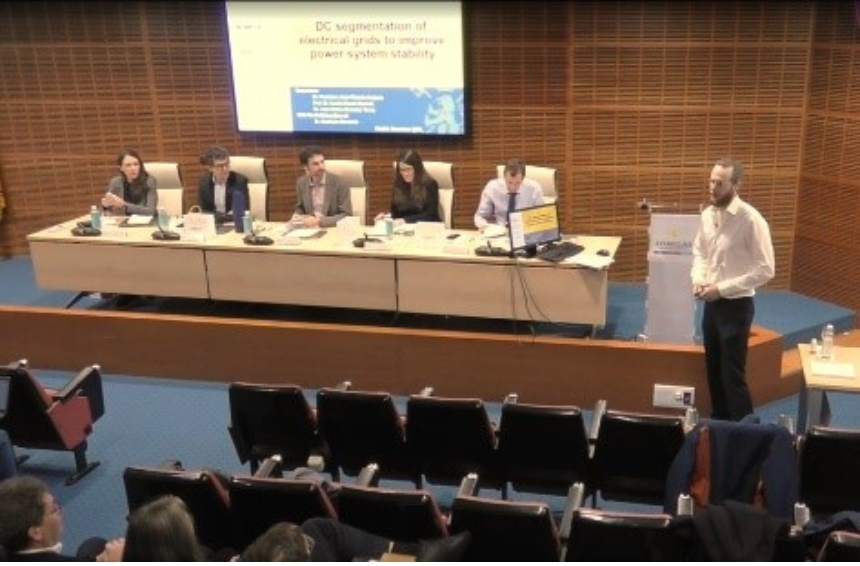PhD Mathieu ROBIN: “DC segmentation of electrical grids to improve power system stability”

Abstract
In recent decades, electrical transmission grids have seen a shift from conventional High Voltage Alternating Current (HVAC) transmission systems to hybrid power systems with a growing share of High Voltage Direct Current (HVDC) transmission (hybrid HVAC/HVDC systems). In parallel with the development of HVDC links, power systems have also become more and more interconnected creating large AC synchronous electrical grids, increasing their total inertia and thus enhancing their frequency stability and overall reliability.
However, with the continuous industrial growth and the introduction of new economical objectives, power systems are operated closer to their stability limits. Consequently, the risk of severe disruptions is increasing. Indeed, in the last decades, various events have shown that electromechanical oscillations, transient stability and stability issues in general are a threat for large power systems.
This doctoral dissertation investigates a promising application of HVDC systems to tackle severe instability problems: DC segmentation. DC segmentation is the action of going from one large AC synchronous grid into a set of smaller AC asynchronous grids connected by HVDC links. Specifically, this research focuses on the study and the improvements of the effects of DC segmentation using HVDC systems based on Voltage Source Converters (VSC-HVDC) on power system stability. The power systemstability phenomena studied in this PhD being angle stability under small disturbances (electromechanical oscillations), angle stability under large disturbances (transient stability) and frequency stability.
The main findings of this PhD thesis can be summarised as follows:
- DC segmentation can be very effective to suppress critical inter-area oscillations in stressed AC power systems. Thus, a new DC segmentation algorithm has been proposed to mitigate interarea electromechanical oscillations. The proposed algorithm obtains a DC-segmentation architecture for an initial HVAC system.
- DC segmentation with VSC-HVDC systems controlled with constant power references has small impact on intra-area electromechanical oscillations. Thus, Power Oscillation Damping (POD) controllers for the reactive-power injections of the converter stations of the VSC-HVDC segments (POD-Q controllers) have been proposed and implemented in order to damp intraarea oscillations in a DC-segmented test system. POD-Q controllers using local and global measurements have been analysed, proving that they can help to damp intra-area oscillations.
- DC segmentation with VSC-HVDC systems controlled with constant power referencesjeopardises frequency stability of the overall system. Thus, an active-power supplementary controller for frequency support has been implemented in the VSC-HVDC segments in order to mitigate this issue.
- Altogether, the use of DC segmentation, frequency support and POD-Q control brings an important improvement of the overall stability of power systems compared to the initial AC system. DC segmentation could be of interest in stressed large-scale power systems in which angle stability is critical.


